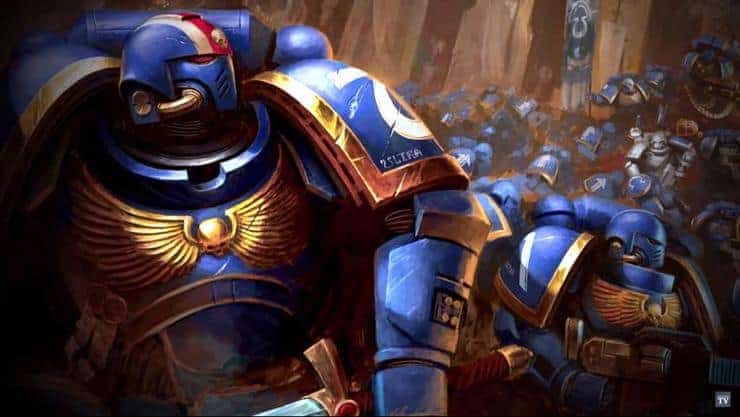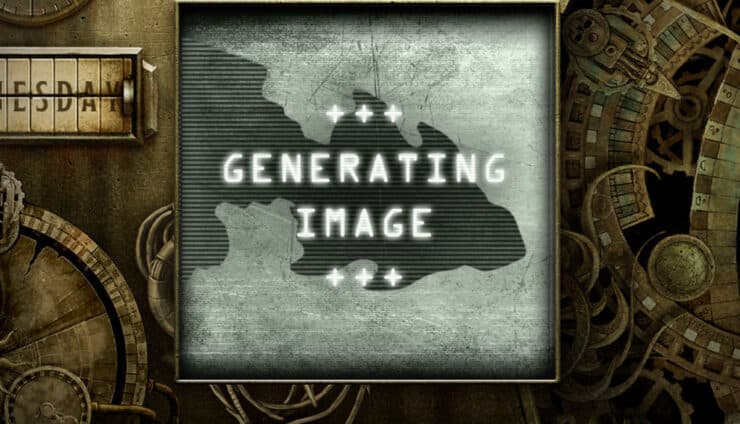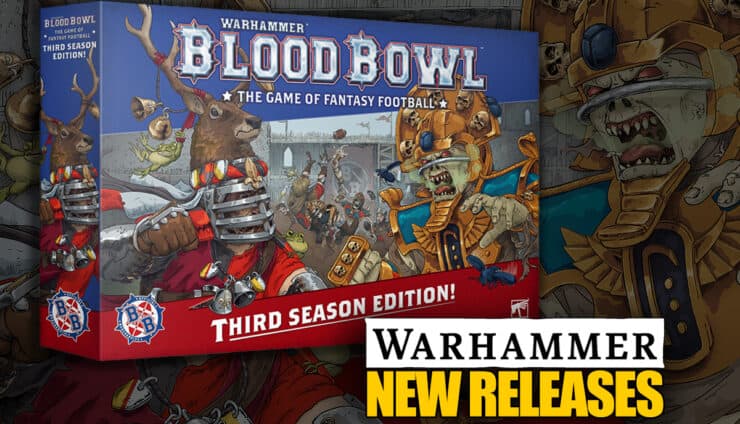From gene-seed Space Marines science projects to galaxy-crushing warriors, see how the Adeptus Astartes Legions became the Imperium’s armor-clad conquerors in Warhammer 40k.
Updated March 25th, 2025, by Rob Baer with new links and information.
They started as gene-seed science experiments and ended up as the Imperium’s walking war machines. The Adeptus Astartes legions aren’t just the poster boys of Warhammer 40K—they’re the guys who show up when orbital bombardment feels too polite.
From the Emperor’s lab bench to galaxy-spanning conquests, these armor-clad juggernauts have crushed planets, betrayed each other in spectacular fashion, and somehow made skulls-on-skulls a fashion standard.
As someone who’s spent too many weekends gluing purity seals to shoulder pads and arguing about Codex compliance over hobby tables, I can tell you—the timeline of the Space Marine Adeptus Astartes is nothing short of a bolter-fueled epic.
This guide walks through their origins, the rise and ruin of the legions, the Horus Heresy fallout, and how we ended up with Primaris Marines kicking down doors in Mark X armor. Grab your brush and your lore brain—we’re going all the way back to where the war began.
What is Adeptus Astartes?

The Adeptus Astartes are far more than just power-armored brutes. Each one is a walking tank, molded from the gene-seed of the Emperor’s own sons, the Primarchs. We’re talking about warriors who have survived hellish training, surgery, and more indoctrination than your average cult. They aren’t born into this life—they’re forged into it.
What sets them apart isn’t just their sheer physical prowess or combat efficiency (although they’re terrifying in both departments). It’s their relentless devotion to the Imperium of Man.
These guys aren’t just soldiers—they’re icons of faith, war, and fanatical loyalty. Some might say they’ve got more in common with walking monuments than with your average trooper.
Significance in the Imperium of Man

The legions were originally massive, numbering in the tens of thousands. Each one was tied to a Primarch—20 godlike beings who were equal parts tragic and terrifying.
Think soap opera drama meets intergalactic war crimes. When the Horus Heresy hit, these legions were shattered—both literally and emotionally. Civil war broke out, and brother turned against brother in the messiest family feud the galaxy’s ever seen.
From those ashes rose the modern chapters of the Space Marine Adeptus Astartes. Smaller, more manageable groups, yes—but still packing the same world-ending punch. They’re now scattered across the stars, waging holy war, purging heretics, and doing their best to keep the Imperium from imploding under the weight of bureaucracy, xenos invasions, and warp-fueled nightmares.
And let’s not forget the aesthetics. Adeptus Astartes armor is a whole thing in itself. We’re talking about power armor that’s basically a cathedral with legs. It’s not just practical—it’s loud, iconic, and stamped with enough skulls to make a death metal band blush.
Whether it’s the classic blue of the Ultramarines or the ominous black of the Raven Guard, each suit tells a story. Probably one filled with heroic last stands and liberal use of flamethrowers.
Origins of the Adeptus Astartes

The whole concept behind the Adeptus Astartes was to build warriors capable of surviving anything the galaxy could throw at them. Warp horrors? Xenos hordes? Traitor legions?
Bring it on. These weren’t just taller humans with better gym routines.
They were genetically engineered demigods, thanks to a little thing called gene-seed—custom biological packages that rewrote their bodies (and sanity, sometimes) to serve one purpose: absolute loyalty to the Imperium of Man.
And don’t overlook the power armor. Adeptus Astartes armor isn’t just stylish—it’s a walking arsenal. Each suit turns a Space Marine into a mobile death machine. We’re talking life support systems, enhanced strength, built-in targeting, and the kind of battlefield durability that makes tanks jealous.
The Birth of Space Marines

Of course, the Warp had other ideas, and those Primarchs were scattered across the galaxy like confetti at a daemon’s birthday party. So, while he was busy tracking them down, the Emperor used their gene-seed to create the first Space Marine Adeptus Astartes legions. These early Astartes were prototypes, but once the Primarchs were reunited with their dad, the real fun began.
Each Primarch took command of a legion that matched his own genetic quirks—some were noble, others were brooding murder machines. A few were… problematic.
Let’s just say there’s a reason half the Space Marine legions didn’t stick to the Emperor’s plan. But at the start? It was all about unity, conquest, and reclaiming lost human worlds.
Early Legions and the Great Crusade
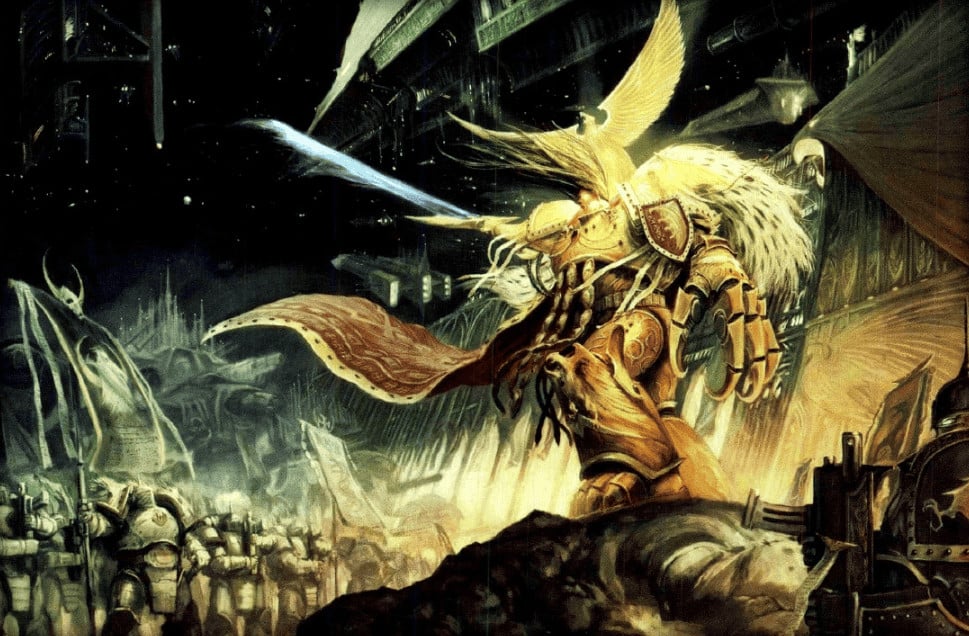
The mission: bring every lost human world back into the fold. By diplomacy, if possible. By orbital bombardment, if not.
Each legion had its own personality. The Ultramarines were the poster boys, always doing things by the book (literally). The Blood Angels fought like artists with chainswords.
The Space Wolves? Imagine space vikings who hate bureaucracy. Each group was united in their loyalty—until things went sideways with the Horus Heresy.
But before that chaos? This was the era when Adeptus Astartes legions earned their place in history. Worlds fell, empires crumbled, and Astartes war cries echoed across galaxies. It was brutal, glorious, and laid the foundation for everything that came after in Warhammer 40k.
If you’re looking for the blueprint of the Space Marine Adeptus Astartes, this was it: massive legions, Lost Primarchs, relentless purpose, and enough firepower to make a god flinch.
Evolution of Power Armor
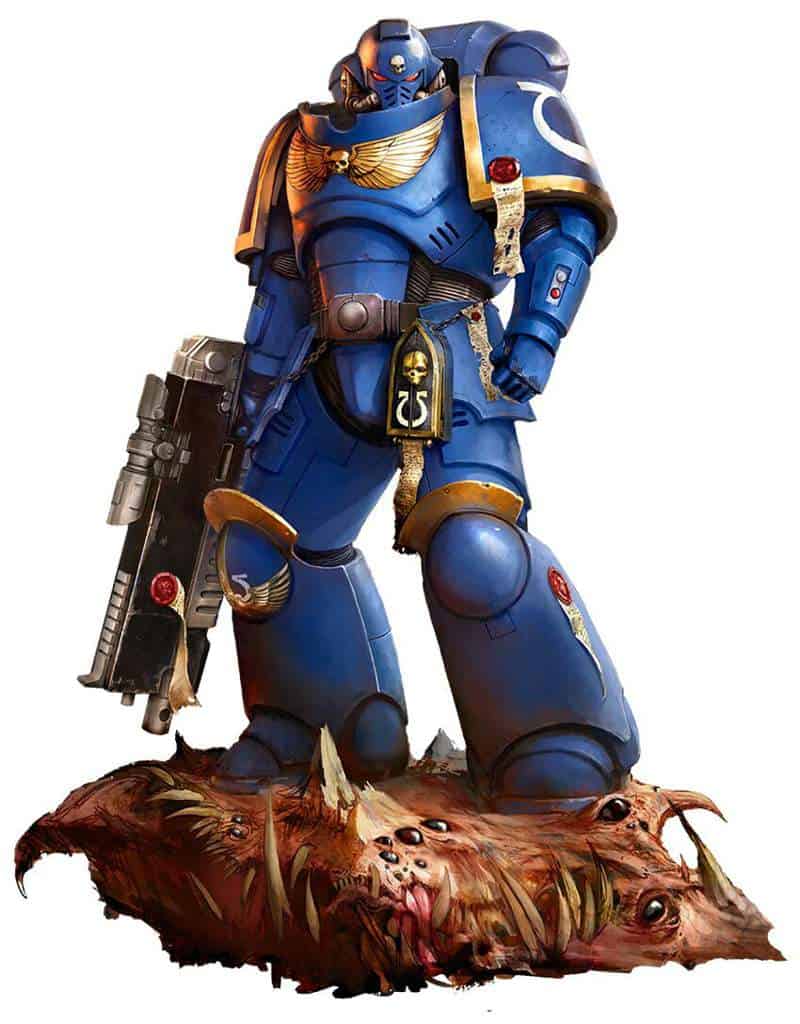
Armor is a big deal in Warhammer 40k. It’s not just about protection; it’s a symbol of legacy, faith, and just the right amount of intimidation. When a Space Marine Adeptus Astartes steps onto the battlefield, enemies don’t just see ceramite plates—they see centuries of warfare, righteousness, and the kind of rage only a ten-thousand-year-old war machine can carry.
Initial Designs and Features
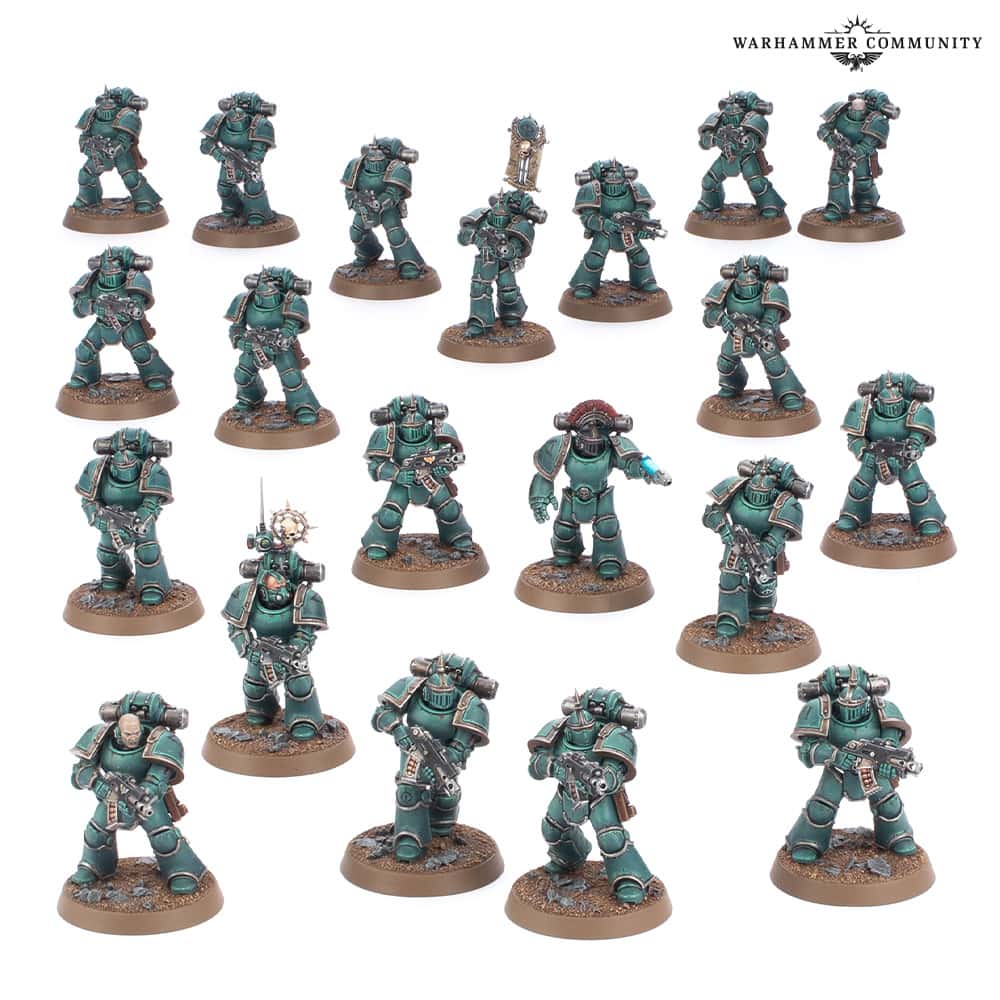
Mark II (the “Crusade” armor) refined things a bit, designed for extended campaigns on newly reclaimed worlds. Still bulky, but the mobility was getting better. Mark III (“Iron”) added even more frontal armor for brutal close-quarters fighting—ideal when knocking on a rebel’s door with a chainsword.
Then came Mark IV, which introduced more standardization across the Adeptus Astartes legions. This version was cleaner, more efficient, and easier to maintain. The Space Marine Adeptus Astartes started to look more like the poster boys they are today—less Frankenstein’s mech suit, more precision-engineered death dealer.
The Role of Adeptus Mechanicus
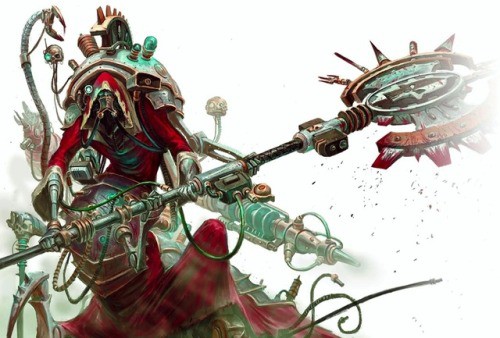
They’re responsible for designing, maintaining, and blessing every piece of Adeptus Astartes armor. Yes, blessing. Tech-prayers are just part of the routine.
Without the Adeptus Mechanicus, the Imperium would’ve lost the ability to produce power armor centuries ago. They guard ancient blueprints like they’re holy relics, which, in their book, they basically are. And while they’re not known for innovation (change tends to freak them out), they’ve managed to keep the forges running, even if it involves chanting to the Machine Spirit and offering up a servo-skull or two.
Advancements Over the Ages

Then came the Primaris Marines and their Mark X armor. This stuff is next-gen. Better power systems, improved plating, and more versatile on the field.
It was like upgrading from a tank to a stealth bomber. And while some of the old-school Astartes weren’t thrilled about the newcomers, there’s no denying the tech is a serious step up.
Across thousands of years, the evolution of Adeptus Astartes armor has been a blend of brutal necessity and ceremonial legacy. Every scratched plate tells a story. Every helmet is a warning. And whether it’s a Mark II relic or brand-new Mark X, one thing’s certain—when it comes to surviving the nightmare that is Warhammer 40K, armor makes the Space Marine.
Major Wars and Conflicts

Two of the biggest entries in their violent resume? The Horus Heresy and the never-ending war against the Chaos Space Marines.
The Horus Heresy

Half the Adeptus Astartes legions turned traitor, following Horus into madness. What was once a glorious crusade to reunite humanity became a brutal civil war. Brother fought brother, and some of the most iconic legions—like the Luna Wolves (then the Sons of Horus), the Death Guard, and the World Eaters—fell into corruption, swapping loyalty for daemonic power.
The Siege of Terra marked the bloody climax, where Horus and his allies besieged the Imperial Palace itself. The Emperor, in a tragic final confrontation, defeated Horus but was mortally wounded. He’s been chilling on the Golden Throne ever since, and by “chilling,” we mean barely alive and hooked up to life support for ten thousand years.
The Horus Heresy shattered the original structure of the Adeptus Astartes legions. The loyalists restructured into smaller, more manageable chapters to prevent any one force from getting too powerful again. This event didn’t just define Warhammer 40K history—it shaped the entire identity of the Adeptus Astartes going forward.
The War Against Chaos Space Marines
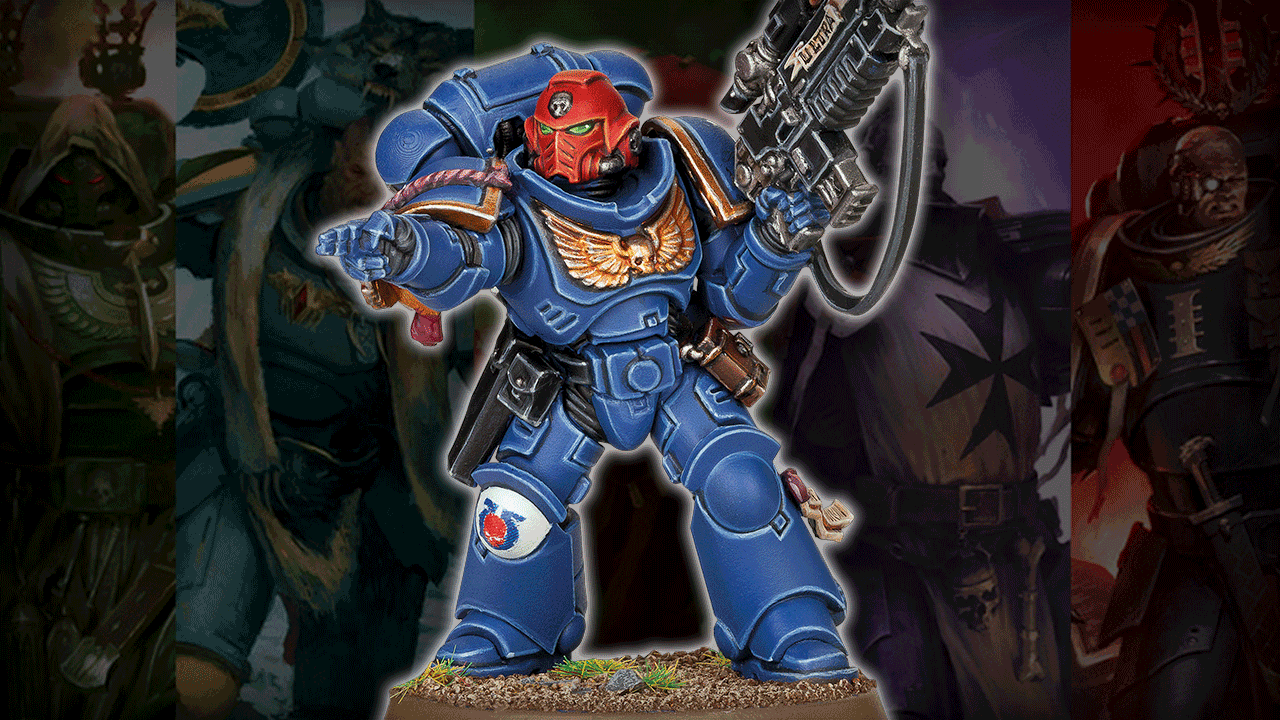
Chaos Space Marines still wage war on the Imperium with relentless fury, and the Adeptus Astartes are often the first line of defense. Every major conflict, from the Black Crusades to the endless skirmishes in the Eye of Terror, pits loyalist chapters against their warped former brothers.
It’s personal, messy, and loud. Imagine a Space Marine battle, now add spikes, daemons, and reality-warping nonsense. That’s the vibe.
The Adeptus Astartes armor may be pure and blessed by the Adeptus Mechanicus, but their enemies wear corrupted versions twisted by the dark gods. It’s like fighting your own shadow—except the shadow is screaming heresies and swinging a chainaxe.
The war between these factions never really ends. It’s a constant grind of honor, vengeance, and extermination. For every new chapter of loyalist Space Marines, there’s a Chaos warband rising from some warp-infested corner, ready to make things very unpleasant.
So when you think about the Warhammer 40K Adeptus Astartes timeline, these two conflicts aren’t just history—they’re the backbone of everything the Imperium fights for… or against.
Adeptus Astartes Legions

During the Great Crusade, the legions weren’t just military units—they were identities. Each had its own combat style, culture, and flair for drama. From the iron discipline of the Ultramarines to the bloodthirsty chaos of the World Eaters, the Adeptus Astartes legions were as varied as the worlds they conquered. And they conquered a lot of them.
Things were going relatively well (if you ignore the constant war) until the Horus Heresy tore everything apart. That little galaxy-wide civil war resulted in half of the legions turning traitor, the Emperor getting throne-bound, and the remaining loyalists scrambling to pick up the pieces.
This is where the legions were broken up into smaller chapters, kicking off a whole new chapter—pun fully intended—in Warhammer 40K Adeptus Astartes history.
Notable Legions and Their Roles

The Ultramarines, led by Roboute Guilliman, are the golden boys of the Imperium. Organized, tactical, and about as by-the-book as you can get when your book is made of leather and war crimes. They basically wrote the Codex Astartes, the rulebook for all modern Space Marine chapters.
Then you’ve got the Blood Angels. Beautiful, artistic, and also incredibly fond of eviscerating enemies with chainswords while dealing with a mild-to-severe vampire curse. Their Primarch, Sanguinius, was basically a winged angel of death. Ten out of ten for drama.
The Space Wolves are the Emperor’s feral side project. Think space Vikings with power armor and a healthy disdain for authority. Led by Leman Russ, these guys howled, drank, and fought their way through the galaxy, preferably all at once.
On the darker side, you’ve got the traitor legions. The Death Guard, once proud, are now rotting under Nurgle’s blessing. The Emperor’s Children traded perfection for obsession and noise. The Word Bearers took religion way too seriously. Each of them now wears their corrupted version of Adeptus Astartes armor, twisted by Chaos.
Whether loyalist or heretic, these legions shaped the foundation of what the Space Marine Adeptus Astartes became—living weapons with a heavy side of identity crisis.
The Primaris Space Marines

They wore updated Adeptus Astartes armor—sleek Mark X suits with more power and flexibility than the older designs (you can see the current 40k Space Marine rules here). It wasn’t just a fashion statement. These new warriors were designed to counter modern threats that were eating the Imperium alive.
The introduction of Primaris caused plenty of tension. Some chapters welcomed the reinforcements. Others, especially older Adeptus Astartes legions, gave them serious side-eye. But with Chaos ascendant and threats lurking in every warp-rip, most commanders figured they’d rather have a giant super-soldier than not. Fair enough.
Cultural Impact and Symbolism

Over time, the Space Marine Adeptus Astartes have gone from tabletop miniatures to cultural giants, instantly recognizable across gaming, pop culture, and hobby spaces. People who’ve never rolled a D6 in their lives still know what a Space Marine looks like. That’s saying something.
At the core of this impact is the image of the Adeptus Astartes: towering warriors, forged by gene-seed and encased in intimidating Adeptus Astartes Power Armour. They’re not just units on a battlefield; they’re walking cathedrals of grim determination. Their entire design—the skull motifs, purity seals, and chapter colors—feels like a gothic church crash-landed into a military bootcamp. It’s dramatic, it’s intense, and it’s utterly unforgettable.
The symbolism extends well beyond aesthetics. In the lore, each battle-brother represents unwavering duty to the Imperium of Man. In the real world (and soon, the Cavill Amazon series), fans latch onto these themes of resilience and righteous fury.
It’s why the Adeptus Astartes legions are such a big deal—they’re not just part of the setting, they are the setting. The image of a Space Marine has become shorthand for the entire Warhammer 40K universe: massive, dark, and built to wage eternal war.
Adeptus Astartes Logo and Symbol

Many chapters also have their own icons. The Ultramarines rock the inverted omega symbol, while the Blood Angels show off a blood drop with wings. Each one tells a story, not just about the chapter’s role in the Imperium, but their unique history, beliefs, and combat style. When you see a symbol on a pauldron, you’re getting a visual summary of thousands of years of victories, losses, and heroic last stands.
In Warhammer 40K Adeptus Astartes lore, these icons aren’t just decorative. They’re sacred. Chapters go to great lengths to preserve their sigils, and it’s not uncommon for a battle-brother to continue fighting even after losing an arm—just so the symbol on his shoulder plate doesn’t fall into enemy hands. That’s commitment.
Community and Fandom

Space Marine Adeptus Astartes have become the face of Warhammer 40K not only because of their design, but because fans can’t get enough of their mythos. Whether it’s customizing an army with unique heraldry or debating if the Emperor was right about Guilliman’s Codex, the community thrives on the depth and drama these warriors bring.
They’ve inspired art, novels, games, and way too many glorious paint jobs. And let’s not forget the number of times someone has screamed “FOR THE EMPEROR!” while dramatically pushing miniatures across a table. The Adeptus Astartes are more than soldiers—they’re cultural icons, wearing their chapters’ histories in every dented plate of ceramite.
Conclusion

From the original Adeptus Astartes legions like the Dark Angels that marched with the Emperor to the modern-day chapters and Primaris reinforcements, these warriors have shaped the Imperium and its endless wars.
They’ve clashed with traitors, aliens, daemons, and bureaucrats, leaving a trail of destruction, honor, and power-armored sass wherever they go. Their impact can be felt in every major war, every shattered world, and every fan debate about which chapter is the most loyal or the most overpowered.
And that iconic Adeptus Astartes armor? Yeah, it’s basically the superhero cape of the 41st millennium—equal parts terrifying and awesome.
In short, if you’re looking at the Warhammer 40K timeline, don’t bother bringing a calendar—bring a chainsword.
FAQs
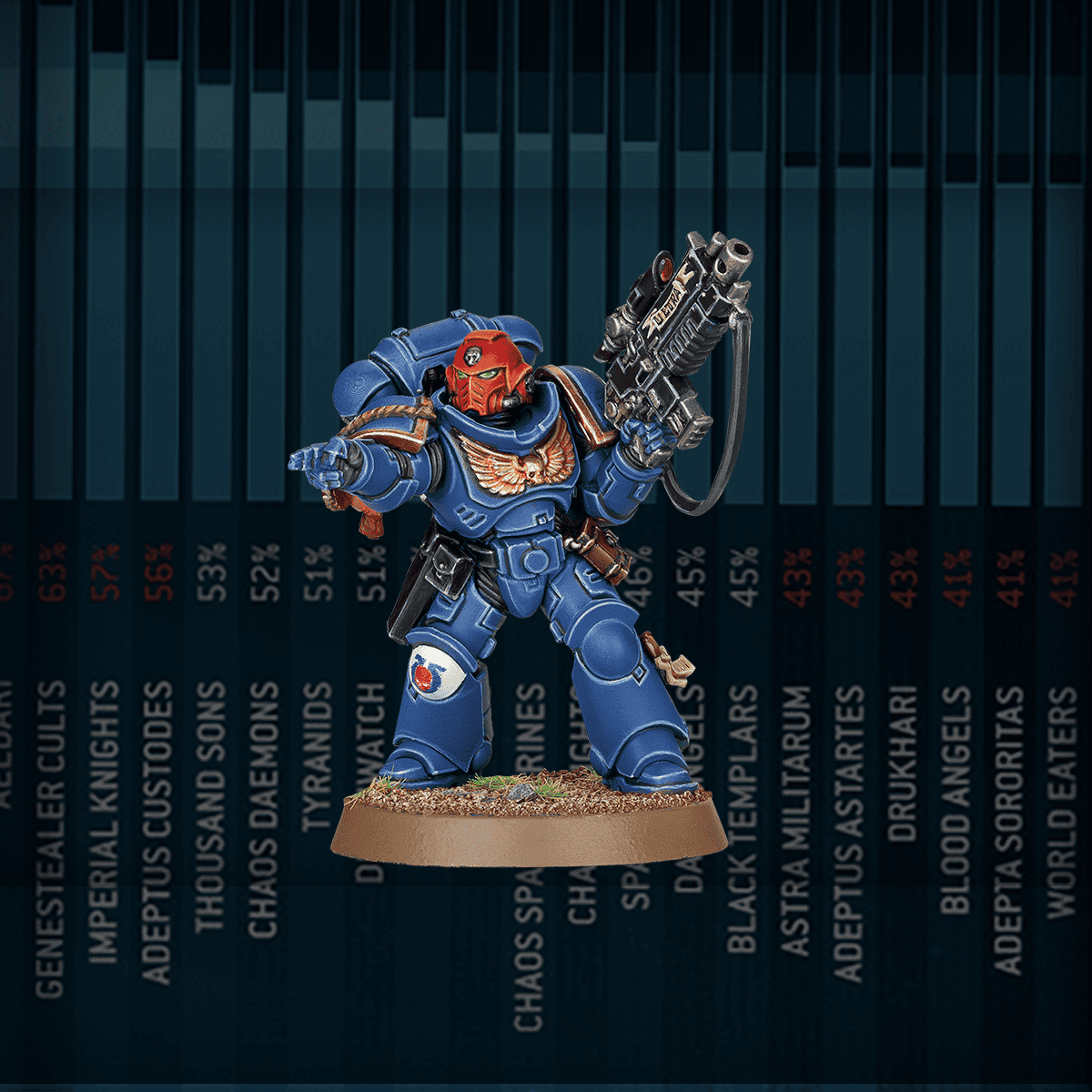
Adeptus Astartes is High Gothic for “Those who have been enhanced.” It refers to the Space Marines—genetically modified super-soldiers created to serve the Emperor of Mankind. Basically, if the Imperium had a special forces unit that also doubled as religious icons and walking tanks, this would be it.
What is Adeptus Astartes?
The Adeptus Astartes is the military order of the Imperium’s Space Marines in Warhammer 40K. They’re organized into chapters (formerly legions), each with its own culture, tactics, and terrifyingly large armory. These warriors are engineered using gene-seed and encased in Adeptus Astartes armor that turns them into near-unstoppable forces on the battlefield.
They act as shock troops, executioners, and protectors of humanity—all rolled into one very grumpy, very deadly package.
How tall are Adeptus Astartes?
Standard Space Marine Adeptus Astartes stand around 7 to 8 feet tall, depending on the lore source. With their armor on, they can easily top 8 feet and dominate any room they enter—assuming they can fit through the doorway. Primaris Space Marines, who are the newer and “improved” version, can be even taller, pushing the 8.5 to 9-foot mark. You won’t be seeing them on any civilian shuttle bus, that’s for sure.
Final Thoughts
The Warhammer 40K Adeptus Astartes aren’t just cannon fodder in power armor—they’re the enduring face of loyalty, rage, and duty in a galaxy that eats hope for breakfast. Their legacies stretch from ancient crusades to modern apocalyptic standoffs, each story more grimdark than the last. And whether it’s the iconic silhouette of their Adeptus Astartes armor or the thunderous arrival of a drop pod, one thing’s clear: when a Space Marine shows up, the Emperor’s will is about to be enforced—loudly.
The Adeptus Astartes legions didn’t just leave their mark on the Imperium—they are the mark.
Learn How to Play Space Marines Here!
What do you think about the Adeptus Astartes, their legions, Space Marines’ power armor, and battles in Warhammer 40k?
